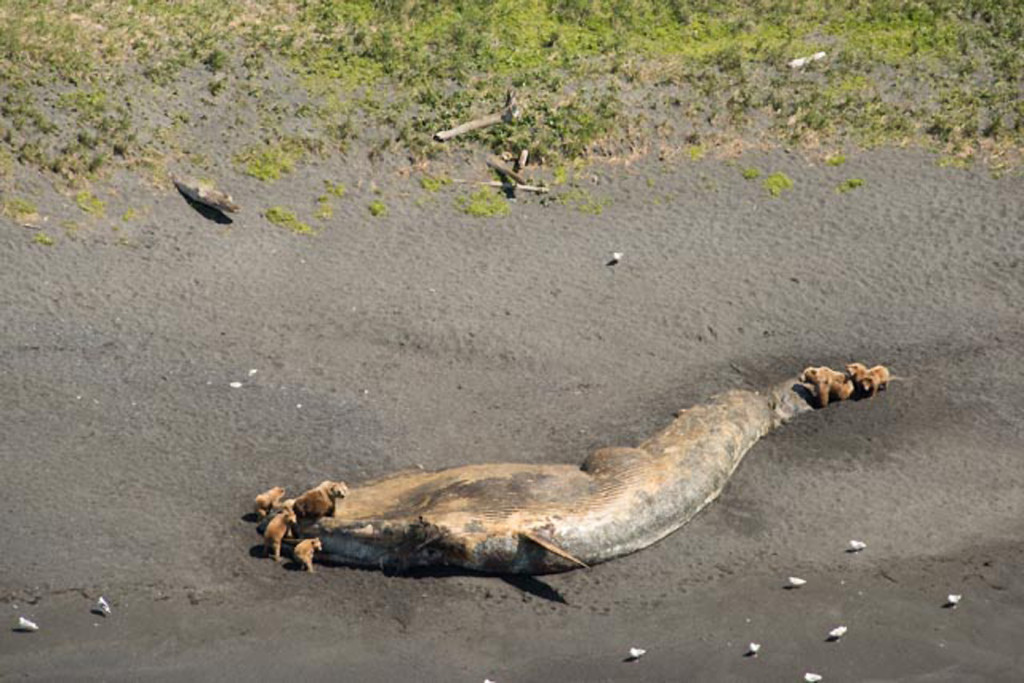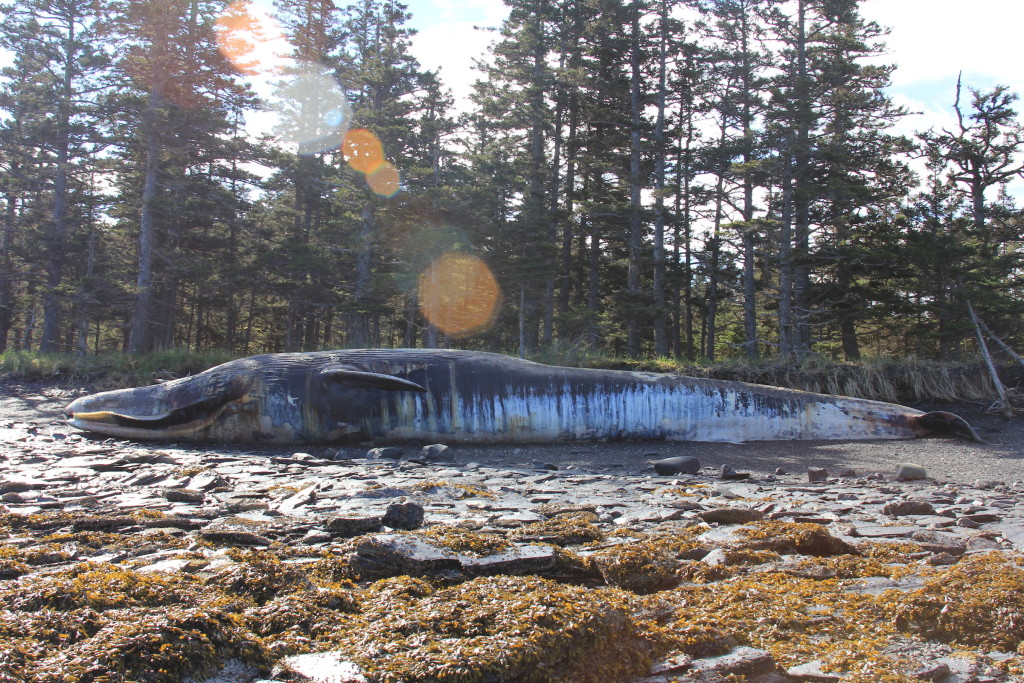I spent the last three years in the midst of humpback whales, mesmerized while watching them feed, play and sleep throughout the waterways of Alaska’s Inside Passage.
This year, five cows migrated from Hawaii to Southeast Alaska with calves in tow, more than I have ever seen. I also experienced another new and phenomenal whale watch moment this year. We (“we” being my tour guests and I) saw two groups of bubblenet feeders fishing simultaneously. We were surrounded. Each group of netters had a minimum of 10 whales herding herring. A group on the port side, a group on the starboard side. It was like watching a tennis match; look left, look right, left, right, left, right. My description does not convey the grandeur of the event.
Therefore, I find the following press release from the National Oceanic and Atmospheric Administration’s (NOAA) distressing: NOAA Declares Deaths of Large Whales in the Gulf of Alaska an Unusual Mortality Event.

Whale deaths in Alaska are nothing new. I read articles in the Juneau Empire and Alaska Dispatch News about whale strandings and deaths, but did not realize the extent until today when NOAA released the following press release stating whale deaths this year are “three times the historical average.”
But that is not all of the story: dead whales have been washing ashore in Northern California as well. You can read more about the California incidents in this Associated Press article that ran in the Juneau Empire May 27. The Associated Press article states “At least one of the whales showed evidence of being hit by a ship. Two others were missing limbs, which indicates they got tangled in fishing gear or attacked by killer whales.”
I am pleased to see action toward determining what is causing the death of the whales throughout the Gulf of Alaska.
============================================================
PRESS RELEASE: August 20, 2015 Julie Speegle, 907-586-7032 w., 907-321-7032 c.
NOAA DECLARES DEATHS OF LARGE WHALES IN GULF OF ALASKA AN UNUSUAL MORTALITY EVENT
NOAA is declaring the recent deaths of 30 large whales in the western Gulf of Alaska an “unusual mortality event,” triggering a focused, expert investigation into the cause. An unusual mortality event is a stranding event that is unexpected, involves a significant die-off of a marine mammal population, and demands immediate response.
Since May 2015, 11 fin whales, 14 humpback whales, one gray whale, and four unidentified cetaceans have stranded around the islands of the western Gulf of Alaska and the southern shoreline of the Alaska Peninsula. To date, this brings the large whale strandings for this region to almost three times the historical average.
The declaration of an unusual mortality event will allow NOAA and federal, state, and tribal partners to develop a response plan and conduct a rigorous scientific investigation into the cause of death for the stranded whales.
“NOAA Fisheries scientists and partners are very concerned about the large number of whales stranding in the western Gulf of Alaska in recent months,” said Dr. Teri Rowles, NOAA Fisheries’ marine mammal health and stranding response coordinator. “While we do not yet know the cause of these strandings, our investigations will give us important information on the health of whales and the ecosystems where they live. Members of the public can greatly assist the investigation by immediately reporting any sightings of dead whales or distressed live animals they discover.”
Map of unusual mortality events: Map courtesy of NOAA

Experts from the Working Group on Marine Mammal Unusual Mortality Events, which was established in 1991 and is part of the Marine Mammal Health and Stranding Response Program, determined that the high number of large whale strandings in the western Gulf of Alaska met the criteria for focused resources and research, and recommended the NOAA declaration.
The rigorous, collaborative investigation into these deaths will continue to involve scientists from NOAA and partner organizations, as well as members of the Alaska Marine Mammal Stranding Network. These kinds of investigations generally require months, or sometimes even years, of data collection and analysis, depending on the nature and duration of the event. NOAA will publish information on its unusual mortality event website as it becomes available.

Members of the public can assist in the investigation by immediately contacting the Alaska Marine Mammal Stranding Network hotline at 877-9-AKR-PRD (877-925-7773) if they see a stranded or dead marine mammal. Only specially trained marine mammal experts are authorized to respond to marine mammals in distress. The public should not touch stranded or floating whales.
NOAA’s mission is to understand and predict changes in the Earth’s environment, from the depths of the ocean to the surface of the sun, and to conserve and manage our coastal and marine resources. Join us on Twitter, Facebook, Instagram and our other social media channels at http://www.noaa.gov/socialmedia.
To learn more about NOAA Fisheries in Alaska, visit alaskafisheries.noaa.gov or www.afsc.noaa.gov.
=========================END=================================
The following graphic is from NOAA’s unusual mortality event website. According to this page, “Since May 2015, elevated large whale mortalities have occurred in the Western Gulf of Alaska, encompassing the areas around Kodiak Island, Afognak Island, Chirikof Island, the Semidi Islands, and the southern shoreline of the Alaska Peninsula. Most whale carcasses have been floating and were not retrievable. Also, the majority of carcasses were in moderate to severe decomposition with only one whale sampled to date.”

All text, videos or photos copyright by Aleta Walther
or respective copyright holders, 2015
Naturalist, Outdoor Excursion Guide, CIG, CTA, ATG
CONTACT: aleta@prwriterpro.com
